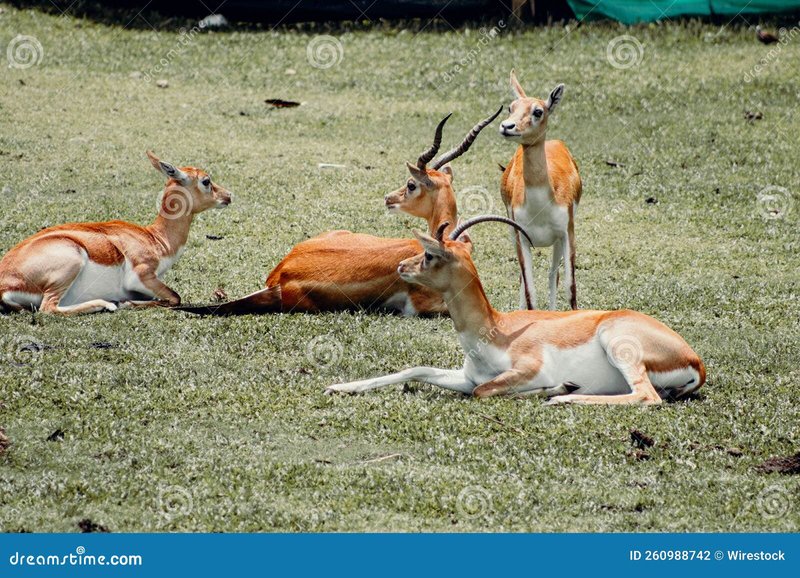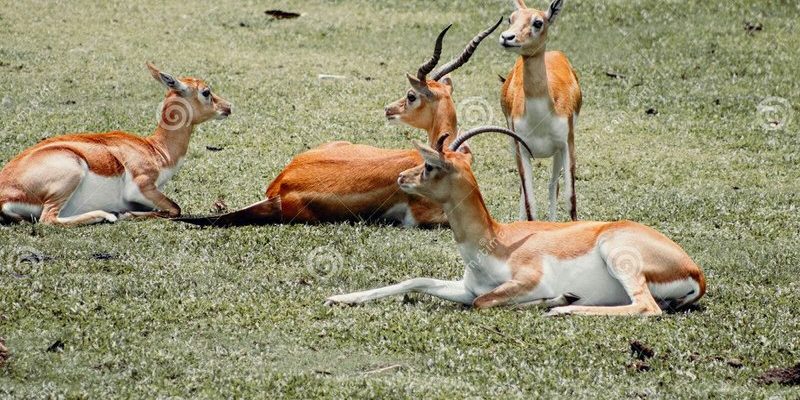
Antelopes are not just graceful and speedy; they’re also remarkably resilient. There are many species of antelopes, from the sleek Thompson’s gazelle to the sturdy kudu. Each species has its unique set of skills and adaptations that help them navigate and flourish in their distinctive environments. Let’s explore these incredible survival tactics and see how antelopes manage to thrive where many other animals might struggle.
Physical Adaptations to the Environment
Antelopes are built for survival. Their bodies are crafted by nature to withstand the rigors of harsh climates. For instance, many antelope species have long, slender legs that allow them to run at high speeds—sometimes up to 50 miles per hour! This speed is crucial for escaping predators like lions and hyenas. Their lightweight frames and powerful muscles provide the agility needed to make swift turns and quick bursts of speed when danger lurks nearby.
Another fascinating aspect of antelope biology is their coloration. Many have a coat that blends seamlessly with their surroundings—think of the tan and brown hues you might see against the backdrop of scrublands or savannas. This natural camouflage helps them avoid detection by both predators and prey. When you spot an antelope standing still in a field, it might take a moment to realize it’s there! This ability to remain hidden is a significant asset in their survival toolkit.
Moreover, their ears are like radar dishes! Antelopes have large, keen ears that can pick up the slightest sounds. This heightened sense of hearing allows them to detect potential threats from a distance, giving them time to flee. Imagine having your ears tuned to every rustle and snap in your environment—it’s a lifesaver!
Water Conservation Techniques
Okay, let’s talk about water. In extreme environments, finding water can be a real challenge. Antelopes have developed some impressive ways to stay hydrated without needing to drink all the time. Some species can go for long periods—sometimes even days—without drinking at all. Instead, they get moisture from the plants they consume. It’s like how we can munch on fruits and veggies to stay refreshed!
During the hottest parts of the day, antelopes often seek shelter under trees or bushes to avoid the sun. They’re smart about their foraging, searching for greener foliage, which usually has higher water content. Imagine them navigating their habitat, knowing when and where to eat to stay cool and hydrated.
Interestingly, some antelopes adapt their activity patterns to ensure they are out and about when it’s cooler. Rather than roaming during the sweltering midday heat, they might graze early in the morning or later in the evening. This shift not only helps them avoid overheating but also reduces the risk of running into predators.
Social Behavior and Herd Dynamics
Antelopes are social creatures, often forming herds. This behavior is more than just for companionship; it’s a vital survival strategy. In a herd, an antelope has more eyes and ears to detect danger. When one member of the group spots a predator, it can alert the others, creating a better chance for the whole group to escape.
Herd dynamics can vary widely among different species. For instance, some antelopes, like the wildebeest, migrate in large herds across vast distances in search of food and water. This migratory behavior is like a continuous search party, maximizing the chances of survival for the species. Meanwhile, other antelopes might prefer smaller groups or even solitary living, depending on their environment.
Additionally, social interactions among herd members can enhance survival. Antelopes often groom each other, which not only helps keep their coats clean but also strengthens social bonds. These connections can lead to increased cooperation in times of need, such as when scouting for food or keeping watch for predators.
Dietary Adaptations
Now let’s dig into what antelopes eat. They are primarily herbivores, which means they rely on plants for food. But not all plants are created equal, especially in harsh environments. Antelopes have developed a keen sense of what to eat based on their surroundings. They often graze on grasses, leaves, and shoots, which might be tough and thorny. Their specially adapted teeth are designed to chew through tough plant materials, much like how some people prefer hearty, whole foods that fill them up.
In addition to being selective eaters, antelopes can also adapt their diets based on seasonal availability. During dry periods, when grass is scarce, they might switch to eating bushes or trees. This flexibility allows them to make the most of whatever their environment offers, ensuring they’re getting the nutrients they need to thrive.
But here’s the thing: some antelopes also face competition for food from other herbivores. This competition can be fierce, especially in areas where food is limited. To counter this, antelopes have evolved to be incredibly efficient foragers, often moving quickly from one feeding area to another to maximize their intake.
Predator Awareness and Evasion Tactics
Living in harsh environments means encountering predators, and antelopes are no strangers to danger. They’ve developed remarkable strategies to detect and evade potential threats. As mentioned earlier, their keen eyesight and hearing play a significant role in their survival. They can spot movement from a great distance, allowing them to react quickly.
When faced with danger, antelopes are masters of evasion. They not only run quickly but also utilize their agility to make quick turns and jumps. This can confuse predators, making it harder for them to catch their prey. Think of a skilled dancer at a party, gracefully navigating through the crowd—that’s how antelopes maneuver in the wild!
Interestingly, some antelope species have unique group behaviors that help protect them. For example, when a predator is spotted, members of the herd might scatter in different directions. This tactic can split the predator’s attention, giving individuals a better chance of escaping. It’s a fascinating survival tactic that showcases the animals’ instincts and cooperation.
Adaptation to Seasonal Changes
In nature, change is the only constant. Antelopes are no exception; they have developed ways to adapt to seasonal shifts. Whether it’s the wet season bringing lush grass or the dry season making food scarce, they show remarkable resilience. During the rainy season, antelopes take advantage of abundant food sources, packing on extra weight to help them through tough times.
Conversely, during the dry season, they are incredibly resourceful. They might move to different areas where food and water are more readily available. This migratory behavior isn’t just about survival; it’s a testament to their adaptability. Antelopes know how to read their environment and make smart choices that optimize their chances of survival, making them truly formidable in harsh conditions.
Furthermore, breeding patterns also shift with the seasons. Many antelope species time their reproduction to coincide with the rainy season, ensuring that food is plentiful for nursing mothers and their young. By synchronizing births with environmental changes, they increase the chances of survival for the next generation.
Antelopes are remarkable survivors in the wild, showcasing an array of adaptations that allow them to thrive in harsh environments. From their physical features to their social behaviors, these animals have honed their skills over time to navigate challenges like droughts, predation, and changing landscapes. Their ability to adapt and persevere serves as an inspiring reminder of nature’s resilience.
So, the next time you think about antelopes, picture them darting gracefully across a sun-soaked savanna or quietly grazing in a bustling herd. Their ability to survive isn’t just about their speed or agility—it’s a combination of instinct, teamwork, and a deep understanding of their environment. These strategies make them not just survivors but thriving members of the animal kingdom.

